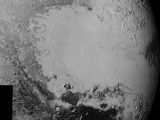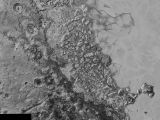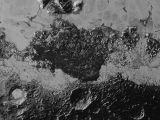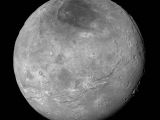Remember when the New Horizon's probe flew by dwarf planet Pluto on the outskirts of the Solar System back in July? Well, over these past few days, the spacecraft has delivered a cohort of close-up images revealing the orb's topography.
As it turns out, landscapes on Pluto are so complex and diverse that mission scientists over at NASA are pretty much scratching their heads over the views beamed back to Earth by the space probe.
“Pluto is showing us a diversity of landforms and complexity of processes that rival anything we've seen in the Solar System,” New Horizons Principal Investigator Alan Stern said in an interview.
“If an artist had painted this Pluto before our flyby, I probably would have called it over the top - but that's what is actually there,” the Southwest Research Institute scientist went on to add.
“It's complicated,” NASA sums up Pluto's topography
It was over this past Labor Day weekend that New Horizons got to work delivering new views of Pluto and other data that it collected during its historic flyby. Mission scientists say it will be about a year before they finish downloading all the images and info.
The views that reached Earth these past few days show nitrogen ice flows seeping from mountainous regions onto plains, valleys that appear to have been created by material flows crossing the orb's surface, and even what seem to be dunes carved by winds.
The presence of dunes on Pluto hints that, when younger, the orb had a much thicker atmosphere than it now does. Then again, it might be that the dunes are the work of processes scientists are yet to identify.
Then there are regions carrying mountains arranged rather chaotically and that hint at disorderly geological activity in Pluto's past. Judging by their appearance, scientists suspect these jumbled mountains might in fact be humongous blocks of water ice.
To add to the disarray that appears to be Pluto's topography, scientists say that, during its flyby of the dwarf planet, New Horizons also documented heavily cratered terrains adjacent to smooth, icy plains. The contrast between these landscapes is a bit disconcerting.
“New close-up images of Pluto from NASA’s New Horizons spacecraft reveal a bewildering variety of surface features that have scientists reeling because of their range and complexity,” researchers admit.
So, where is NASA's New Horizons spacecraft now?
Having completed its flyby of dwarf planet Pluto, the New Horizons probe, launched in January 2006, was sent to have a close look at other objects in the Kuiper Belt.
The spacecraft now finds itself about 43 million miles (69 million kilometers) from Pluto and an astounding 3 billion miles (5 billion kilometers) from Earth.
The celestial body that NASA scientists plan to direct it towards goes by the name 2014 MU69. This orb sits about 1 billion miles (1.6 billion kilometers) beyond Pluto.
Hence, it will be a while until New Horizons reaches it. In fact, researchers estimate a rendezvous between the probe and 2014 MU69 will not happen until 2019.
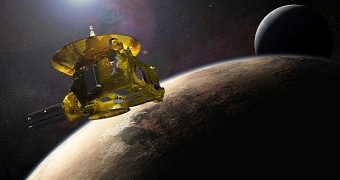
 14 DAY TRIAL //
14 DAY TRIAL // 

